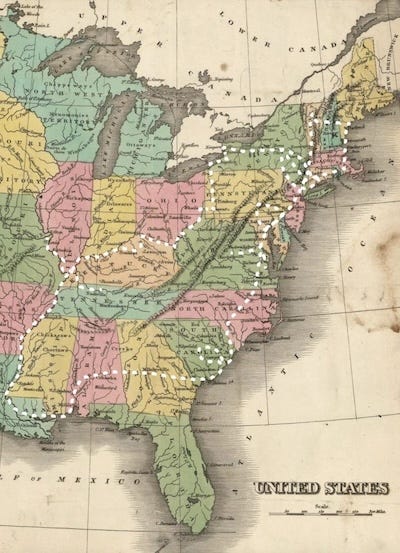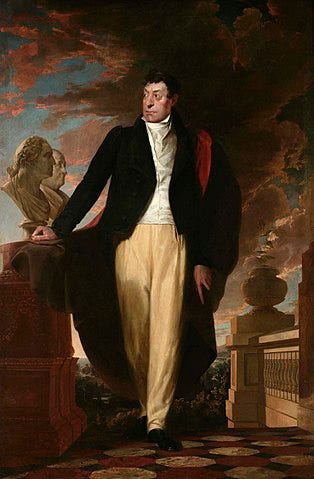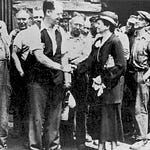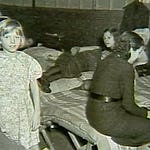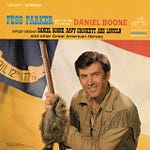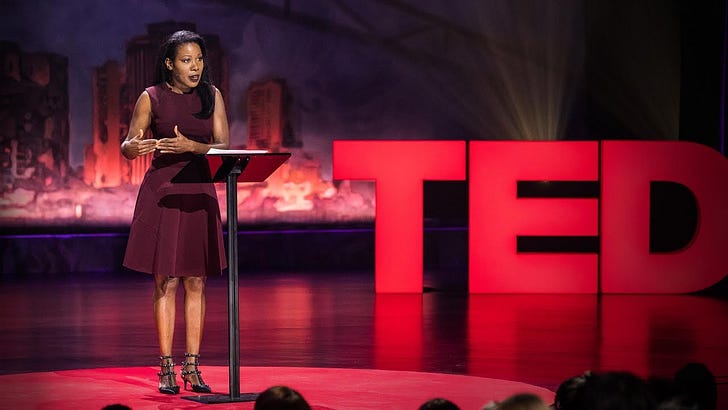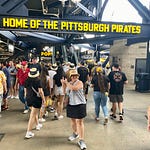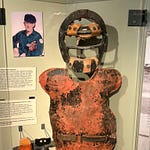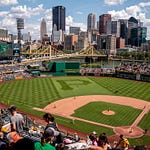Did you know we’re in a bicentennial year? From now until September, 2025, historical sites in the nation’s first 24 states will be commemorating the Marquis de Lafayette’s Farewell Tour. Planned as a three-month tour, Lafayette was celebrated by all as the “Nation’s Guest” for 13 months. Honestly, it amazes me how Lafayette Fever swept the nation in the 1800s, with crowds thronging to catch a glimpse of the French nobleman who aided the American cause against Great Britain. For comparison’s sake, 4000 people greeted The Beatles in NYC but 80,000 turned out for Lafayette there!
I’ve come across a few theories to explain this phenomenon, which took place fifty years after the Revolution. One says that Lafayette was the swashbuckling symbol of France’s role in securing independence, and Americans were still deeply grateful. Another holds that Lafayette basked in the American reverence for George Washington as his de facto adopted son. (Lafayette even named his son Georges Louis Gilbert Washington de Motier Marquis de Lafayette).
The theory that rings most true for me is that Lafayette’s farewell tour coincided with the vitriolic presidential election of 1824, in which, for the first time, no founding father was running. Perhaps the country was demonstrating a nostalgia and reverence for the past and nervousness about the future, as author Sarah Vowel stated in an interview.
If you’re like me, Lafayette’s place in our history is more legendary than factual. The opening paragraph a New Yorker story from 2021 summed up my sketchy understanding:
Lafayette, like Betsy Ross and Johnny Appleseed, is so neatly fixed in the American imagination that it is hard to see him as a human being. Betsy sews stars, Johnny plants trees, Lafayette brings French élan to the American Revolution. He is, in the collective imagination, little more than a wooden soldier with a white plume on his cocked hat. In the original production of “Hamilton,” Daveed Diggs portrayed him affectionately, with a comically heavy French accent and an amorous manner—a hero, yes, but of the cartoon kind, a near relation of Pepé le Pew.
Allison Epstein wrote a most entertaining sketch of the marquis in her hilarious newsletter, Dirtbags Through the Ages. When Allison can’t criticize someone, take note.
I must leave you to dig into Lafayette’s extraordinary international escapades on your own while we focus on his stops along the Ohio River in this month’s trivia.
Note to my fabulous new subscribers:
Monthly trivia is for sport. It’s not a test. Only the rare person can answer all ten trivia questions without any prep. I couldn’t answer them without a significant amount of research, either! Do your best and enjoy learning something new. Answers in the footnotes.
QUESTIONS
When Lafayette visited Old Shawneetown, Illinois, it was simply called Shawneetown. Why do we call it Old Shawneetown today?1
Remember Illinois’ salt industry from last month’s trivia? When Congress granted the salines to Illinois, the state ran the operation using the unpaid labor of enslaved workers who lived in what was then-Shawneetown. After the Emancipation Proclamation, these workers fled, making it a ghost town that eventually came to be called Old Shawneetown.
After a 15-foot flood in 1937, only 20 of Shawneetown’s 400 homes were habitable. Most Shawneetown residents moved three miles inland from the Ohio River, and took the name with them. The remaining section of the original settlement was incorporated as Old Shawneetown in 1956. The town operates several historic sites to this day.
As we’ve discussed before, Marietta, Ohio, was named for Queen Marie Antoinette. Did Lafayette personally know her? Choose the BEST answer.2
Lafayette’s relationship with the queen was fodder for the French Revolution. The political club known as the Jacobins advocated for the violent overthrow of the monarchy and the establishment of a republic. There were two factions of Jacobins, and the The Montagnards were the most radical. Their leader, Maximillian Robespierre, published “proof” of a long-running affair between Lafayette and the queen in a series of illustrated pamphlets.
In 1789, revolutionary fever was spreading throughout France. Lafayette was named the commander of the National Guard. On October 5, a hungry Parisian mob descended on the palace of Versailles, demanding bread. As the crowd shouted angrily at the unpopular queen, Lafayette kissed her hand on a balcony. Lafayette's charm may well have saved the king and queen on that day, though they would not, of course, survive the revolution.
Lafayette named his youngest daughter Marie Antoinette Virginie to honor both the French queen and the state of Virginia. He did so at the behest of Thomas Jefferson.
Lafayette’s Farewell Tour included a visit to Marietta on May 8, 1825. Which is true about that visit? More than one may apply.3
It was not on his original itinerary.
A boat he used on the Ohio River, The Mechanic, was built by John Mitchell on the Little Muskingum River. Lafayette planned the stop in Marietta to thank Mitchell personally for his craftsmanship.
Wealthy landowner Nahum Ward, who had visited Lafayette in Paris a few years earlier, hosted him in his magnificent Putnam Street home. Long lines of people gathered; Lafayette greeted each personally. A list of Revolutionary War officers who settled at Marietta was read to Lafayette, who responded, “I know them all. I saw them at Brandywine, Yorktown and Rhode Island. They were the bravest of the brave.”
Perry County, Indiana, has been named in several treasure hunting books and websites with a story about Lafayette’s lost $8,000 in gold. People are still arguing over the details of the night in May, 1825, when The Mechanic struck either a rock or log in the Ohio River and sank near what is now known as Rock Island. No one disputes that Lafayette’s carriage, papers, and gold also sank with the ship, along with a snuffbox that contained a portrait of Washington. What became of Lafayette’s gold?4
A couple of coins were recovered, enough to forge The Washington-Lafayette Cincinnati Medal. This gold medal was given to Lafayette by George Washington's family after Washington’s death.
If anyone recovered any of it, they never went public with the news.
The Washington-Lafayette Cincinnati Medal is associated with the Cincinnati Society for Revolutionary War officers’ descendants. The Society originated in the dark days of 1783 when a group of American officers contemplated a military coup known as the Newburgh Conspiracy because they were not being paid for their services. The Cincinnati order was formed by Washington and a few officers, including Lafayette, to ensure that the ideals of the Revolution would not die after one generation. What events led to the Newburgh Conspiracy? More than one may apply.5
Without the power to tax under the Articles of Confederation, Congress relied on irregular, voluntary payments from the states known as requisitions to raise revenue. The states' slipshod record of compliance forced Congress to struggle to support the army throughout the war. Officers and soldiers alike were not being paid regularly, and the army was often forced to requisition supplies from citizens.
In 1780, Congress passed a resolution providing half-pay for retired soldiers. However, as of 1783 the states had yet to comply with Congress’s request for the needed funds. The following year a group of nationalists supported an amendment to the Articles of Confederation that would allow Congress to raise revenue through taxes to support the army and pay its foreign loans. However, the state legislatures rejected the impost amendment.
The Continental Congress sold land to the Ohio Company of Associates, a group of former Revolutionary War soldiers and officers, in several transactions over many years. The land was intended for veterans to either sell or live on, but the funds never met the true needs of the veterans.
In 2007, the The Washington-Lafayette Cincinnati Medal sold for $5.3 million to which entity? 6
George Washington’s Mount Vernon Estate and Gardens in Virginia.
The American Numismatic Society in Manhattan.
The Fondation Josée et René de Chambrun at the Château La Grange, Lafayette’s historic home 60 miles east of Paris.
When The Mechanic sank en route to Louisville, Lafayette’s itinerary was delayed by three days. He would nevertheless visit Louisville, Shelbyville, Frankfort, Lexington, Georgetown, Covington, and Maysville. While in Lexington, on May 16, 1825, Lafayette bowed to Lewis Hayden. What is the significance of this gesture?7
Hayden was an enslaved boy who would later travel the Underground Railroad to find his freedom in Boston, and eventually become an abolitionist who helped others achieve freedom.
Hayden was the first graduate of Transylvania University in Lexington and stood beside President Horace Holley on the dais as he conferred an honorary Doctor of Laws to Lafayette.
Which former or future president did Lafayette meet during his visit to Cincinnati?8
William Henry Harrison
Martin Van Buren
Andrew Jackson
At least two oil portraits were painted while Lafayette was on his farewell tour, one by Matthew Harris Jouett, and another by Samuel Morse. Which one was paid for by The Kentucky General Assembly and is now on display in the old Kentucky Capitol in Frankfort?9
b
After a two-day visit in Pittsburgh, Lafayette traveled roughly 35 miles to Butler, Pennsylvania, on the regular stagecoach route between Pittsburgh and Erie, escorted by the Pittsburgh City Light Troop of Cavalry. After a meal in the small town of 500, he walked among the wide-eyed and shook hands with not fewer than 400, including speaking to many men who had fought during the Revolution and the Battle of Brandywine. He recognized some of their faces as the old soldiers stood in review, conversing in detail about the events of the battle, which had nearly taken his life. Fast forward 99 years, what has Butler become infamous for? Yes, this is an essay question.10
Intermission
I’ve recommended The Road To Now podcast several times, and these two episodes are in keeping with our theme. First, an interview with a Frenchman who established The Lafayette Trail—mapping each of Lafayette’s stops. Check out his videos following in the footsteps of the Frenchman.
Second, meet a Franco-American historical interpreter of both Lafayette and Napoleon Bonaparte. A short child with a prominent nose, Mark Schneider’s wise mother told him he was born to portray European nobility, and he’s been doing so for 25 years. He seems to know everything about Lafayette.
ANSWERS
The only correct answer is b. While the history of the salt industry running on enslaved labor is true, and they may have lived Old Shawneetown, I made up the link between the Emancipation Proclamation and the name change.
Both b. and c. are true, but you must agree that b. is the strongest answer. Here is a depiction of the hand-kissing scene from an 18th century engraving:
A good bit of Jacobin propaganda alleged an affair between the Lafayette and the queen as part of the Revolution, including some racy NSFW pamphlets. Reputable historians assure us that the rumors were untrue.
A, and c are true. B is based in truth—John Mitchell did build The Mechanic—but Lafayette didn’t stop in Marietta for the purpose of thanking him.
It’s not a romantic answer, but b. is correct. However, The Washington-Lafayette Cincinnati Medal is indeed a gold medal that was given to Lafayette by George Washington's family and has been exhibited publicly a few times, including in Chicago in 1893 and in France in 1976. I made up the part about Lafayette’s gold being part of the medal. Here’s a picture of the medal.
Both a. and b. are correct. Regarding option c., the The Continental Congress first sold land to the Ohio Company of Associates in 1788, well after the Newburgh Conspiracy. In case you missed it, Ohio land grants were the subject of our June ‘24 trivia.
Here’s a great lecture on the Newburgh Conspiracy.
It went to The Fondation Josée et René de Chambrun at the Château La Grange, Lafayette’s historic home 60 miles east of Paris. The executive director of Mount Vernon didn’t bid for it, as it was out of the estate’s budget.
Final details of the sale here. The Society of the Cincinnati has other interesting insignias that can be seen here. In 1830, Lafayette gave permission to Charles Stewart Daveis, a member of the Massachusetts branch of the Society, to have a replica of the Washington-Lafayette medal made to take with him back to America. Pictured here.
The only correct answer is a. Lafayette noticed fourteen-year old Lewis along the parade route and bowed in his direction. Hayden greatly valued Lafayette’s gesture of recognition. “That act burnt his image upon my heart so that I shall never need a permit to recall it. I date my hatred of slavery from that day.” Source.
Lafayette was a staunch abolitionist who said, "I would never have drawn my sword in the cause of America if I could have conceived that I was founding a land of slavery.” Source.
With that said, Horace Holley did bestow an honorary Doctor of Laws degree on Lafayette.
Answer a., William Henry Harrison, fresh off his term.
Andrew Jackson entertained Lafayette at his home in Nashville, Tennessee right before he started his journey up the Ohio River. Interestingly, it would be Jackson who announced Lafayette’s death to the nation in 1834. In communicating his death, President Jackson ordered that "the same honors be rendered him as were observed upon the decease of Washington."
The correct answer is a. I never knew that the artist Samuel Morse was also the inventor of the electric telegraph. Morse was also a professor of painting and sculpture at the University of the City of New York.
On July 13, 2024, Thomas Matthew Crooks attempted to assassinate Donald Trump as he campaigned in Butler to be elected the country’s 47th president.
The Brandywine veterans represented an important milestone in the young Lafayette’s military career. He suffered a wound in one of his legs early in that battle but managed to calmly lead a Patriot retreat. Because of his composure and courage at this moment, Washington commended him for “bravery and military ardour” in the battle and recommended him to Congress for the command of a division. More details here.



